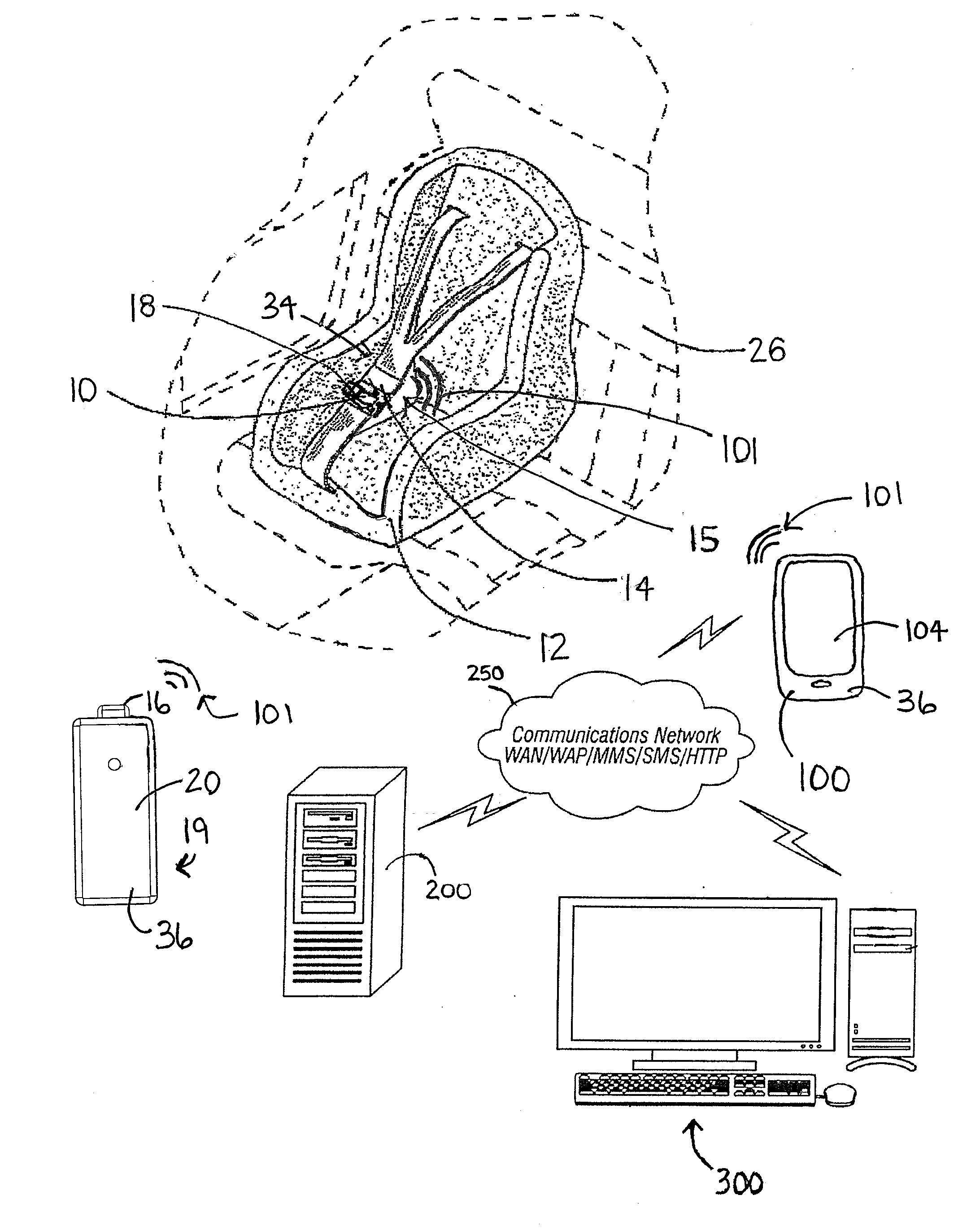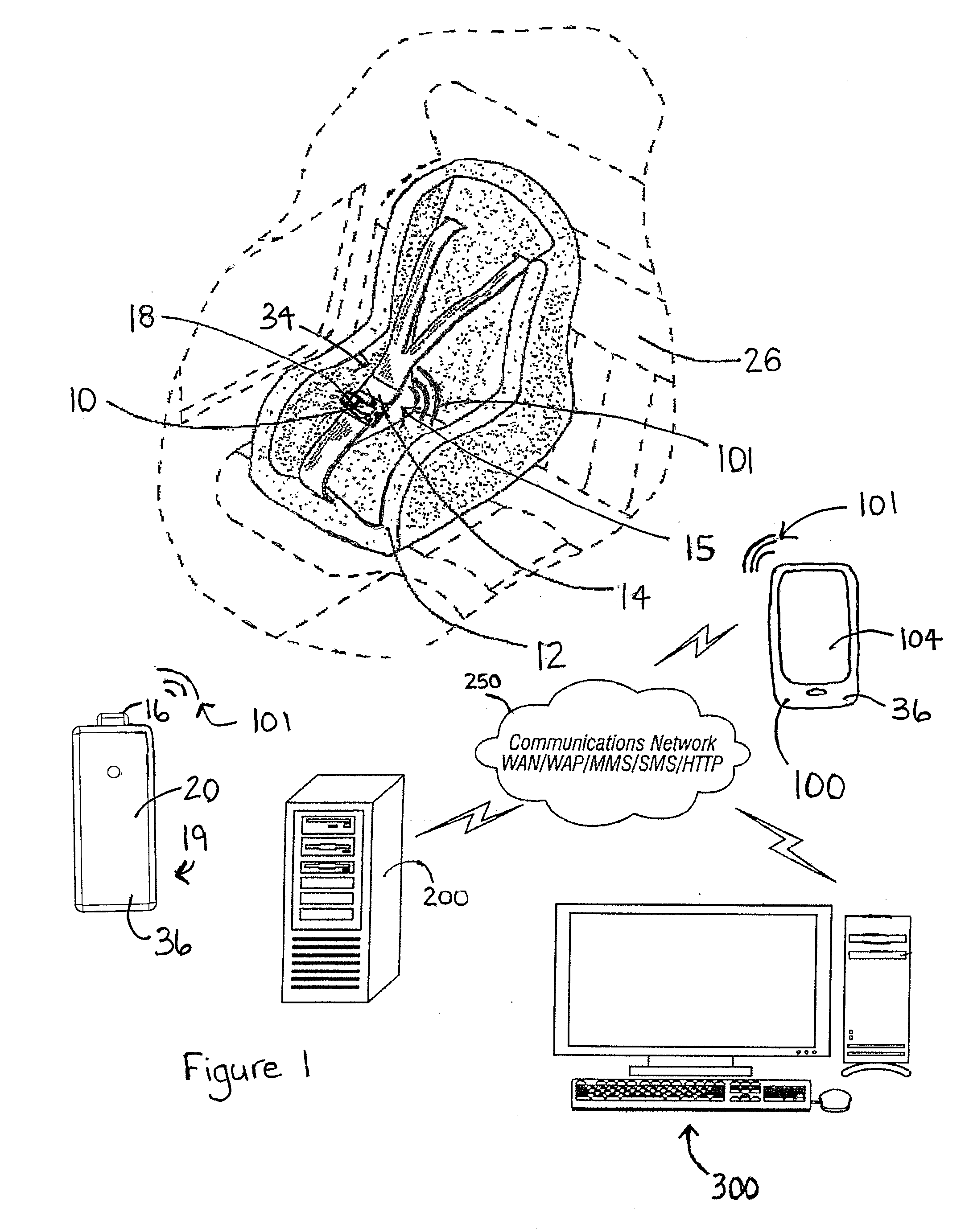Further, the
system does not contemplate a second
car seat in another vehicle for another guardian.
However, this
system's reliance of OBD-II makes the
system inoperable for any vehicles pre-1996.
However, this system requires modification to the vehicle to use the alarm.
This modification can be costly.
However, this system requires modification to the vehicle to use the alarm.
As mentioned above, this modification can be costly.
Chest straps for car seats are typically more flimsy than the buckle, which could lead to breakage of any inserted electrical components over time, and are more suspect to the child unsecuring the connection, thus deactivating the alarm system.
However, this system uses only the chest straps to trigger the alarm and places all electronic components in the chest strap.
As explained above, the use of the chest strap for the electronic components can be problematic.
However, this system requires modification of the vehicle for use and only alerts if the passenger changes seats during the trip.
However, this system only check if a child is buckled in the vehicle if the driver attempts to lock the
doors, not when the driver leaves the vehicle.
However, this system requires modification to the vehicle to use the alarm.
Further, the system does not monitor the location of the driver and merely focuses on whether the
seat belt is latched.
However, this alarm focuses only on whether the occupant is buckled, not whether the driver is in the car with the occupant.
However, this system requires modification to the vehicle to work as well as the use of a newer vehicle with a computer system and speakers.
However, the system requires a vehicle with OnStar® or similar device.
Additionally, the system relies upon the activation of the driver's
seat belt, which may not always be utilized.
However, this system requires modification to the vehicle to use the alarm, requires the presence of a RFID reader which can be costly, and relies upon a
pressure sensor pad in the
car seat to detect the presence of the child, which creates a potential issue with the sensor as it can be dislodged during use, thus deactivating the alarm.
However, the system requires a vehicle with OnStar® or similar device.
Additionally, the system relies upon the activation of the driver's
seat belt, which may not always be utilized.
However, this system requires modification to the vehicle to use the alarm and requires the use of the car ignition to activate the alarm.
However, this system requires modification to the vehicle to use the alarm and requires a
pressure sensitive pad in the driver's seat to activate, adding more costly modifications to the vehicle.
However, this system requires modification to the vehicle to use the alarm and requires a
pressure sensitive pad in the driver's seat to activate, adding more costly modifications to the vehicle.
However, this system requires modification to the vehicle to use the alarm, requires the presence of a RFID reader which can be costly, and relies upon a
pressure sensor pad in the
car seat to detect the presence of the child, which creates a potential issue with the sensor as it can be dislodged during use, thus deactivating the alarm.
However, this disclosure merely determined if the
child safety harness is properly secured and does not determine the position of the driver in relation to the car seat.
However, this disclosure requires modification to the vehicle to use the alarm.
As mentioned above, this modification can be costly.
The alarm relies upon a sensor within the car seat, which creates a potential issue with the sensor as it can be dislodged during use, thus deactivating the alarm.
However, this system requires modification to the vehicle to use the alarm.
As mentioned above, this modification can be costly.
This additional step can easily be overlooked during a busy
morning, thus leaving the potential for the alarm system to be unarmed.
However, this unit requires modification to the vehicle to use the alarm and requires the car ignition to activate.
However, this unit requires modification to the vehicle to use the alarm and requires the car ignition to activate.
Further, a specialized key is required to use the alarm, thus increasing the costs associated with this alarm.
The alarm is located in the chest strap, which as explained above, can be problematic in the long-term effectiveness of the alarm.
However, the constant alerting by Burgess'
s system—as the door will always be opened even if the parent hasn't forgotten the child—inefficiently drains the power supply of the alarm and also will unnecessarily wake a sleeping child.
However, the Rossi '293 patent overly complicates the alarm system by not only detecting a child is present, but also detecting whether the vehicle is still operating.
This complicated dual detection system allows for potential failure of the system.
However, the Rice '509 patent lacks the ability to sound an alarm until a potentially dangerous temperature has already been reached inside of the vehicle.
However, the Thornton '070 patent cannot sound an alarm until a potentially dangerous temperature has already been reached inside of the vehicle.
However, the Thornton '291 patent has a significant drawback of not sounding an alarm until a potentially dangerous temperature has already been reached inside of the vehicle.
However, the Kassai '099 patent does not generate an alarm when the driver is away from the vehicle.
While the above-described devices fulfill their respective, particular objectives and requirements, the aforementioned patents do not describe a
child safety seat with alarm that allows notifying the driver of the vehicle that an infant is in its carrier inside of the vehicle when the driver steps away from the vehicle.
Likewise, as children grow, they are more inquisitive and manipulative of their environment.
Older siblings are able to move components without their parent's knowledge, thus potentially destroying the alarm system if they remove and lose components.
Chest straps for car seats are typically more flimsy than the buckle, which could lead to breakage of any inserted electrical components over time, and are more suspect to the child unsecuring the connection, thus deactivating the alarm system.
When a driver is a way from the vehicle, relying upon alarms within the vehicle are not effective ways of driver.
Drivers of tiny humans can become distracted by gathering paraphernalia from the car and still forget the important cargo within.
Some previous disclosures require the parent to arm the alarm system, but this step can be overlooked easily, leaving the alarm system unarmed.
 Login to View More
Login to View More  Login to View More
Login to View More 


